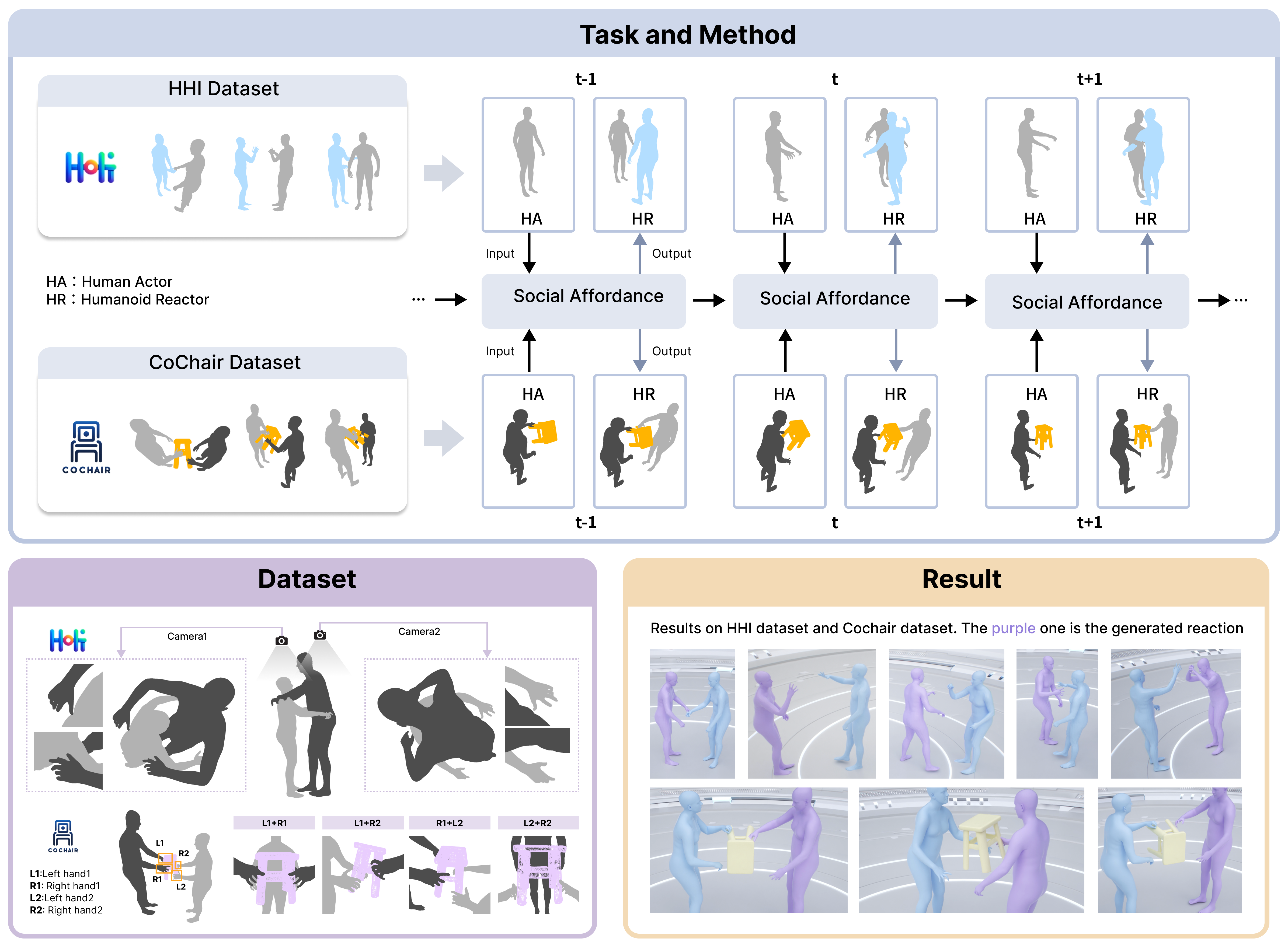
We focus on the human-humanoid interaction task optionally with an object. We propose a new task named online full-body motion reaction synthesis, which generates humanoid reactions based on the human actor's motions. The previous work only focuses on human interaction without objects and generates body reactions without hand. Besides, they also do not consider the task as an online setting, which means the inability to observe information beyond the current moment in practical situations. To support this task, we construct two datasets named HHI and CoChair and propose a unified method. Specifically, we propose to construct a social affordance representation. We first select a social affordance carrier and use SE(3)-Equivariant Neural Networks to learn the local frame for the carrier, then we canonicalize the social affordance. Besides, we propose a social affordance forecasting scheme to enable the reactor to predict based on the imagined future. Experiments demonstrate that our approach can effectively generate high-quality reactions on HHI and CoChair. Furthermore, we also validate our method on existing human interaction datasets Interhuman and Chi3D.
At the training stage, the humanoid reactor can access all motions of the actor. At the prediction stage in the real world, the humanoid reactor can only observe the past motions of the human actor. The forecasting module can anticipate the motions that the human will take.
Given a sequence, we first select a social affordance carrier and build the carrier-centric representation. Then we can compute the social affordance representation. We propose to learn the local frame for carrier and canonicalize social affordance to simplify the distribution. Then a motion encoder and decoder are used to generate reactions.